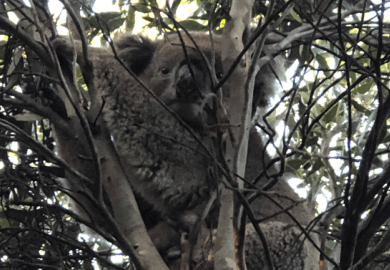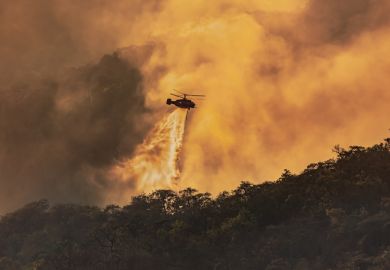Will maize become the "engine of African economic growth" or "an unsustainable folly"? James McCann treads cautiously in his answer to his own question, but still he ingenuously suggests that "maize in many ways defines Africa visually, nutritionally and economically".
In 1998, maize was being promoted as a severe outbreak of malaria hit northwestern Ethiopia. Ethiopians supposed these to be connected — possibly rightly, but the connection may be complex. An Ethiopian at Harvard University decided that maize pollen provided food for mosquito larvae in rain puddles. In 1960, Uganda mosquitoes bred in leaf sheaths of unprotected maize. DDT controlled stalk borers and presumably killed mosquito larvae as well. DDT is now banned.
Those acquainted with maize in East Africa during the 1960s will regret McCann’s omission of the substantial programme at the East African Agricultural and Forestry Research Organisation (EAFFRO), where H. H. Storey unravelled races of maize rusts, laying the foundation for successful breeding of sustainable resistance against rust. McCann touches on the breeding of so-called synthetics developed for East African small-scale farming by determining the combining of ability between partially inbred lines, using these to create populations from which farmers could save seed, maintaining a useful level of biodiversity and not becoming dependent on corporate seed producers.
McCann errs over climate, supposing that a bimodal rainfall pattern "characterises the continent as a whole" and comprises a single wet and a single dry season. Bimodal rainfall distribution means two wet and two dry seasons a year and characterises many inter-tropical areas. The relatively short and somewhat unreliable growing seasons and equally unreliable dry seasons near the equator make for constraints not only on yield but also on quality. It is especially hard to avoid toxin-producing fungal infections on threshed grain. Although "aflatoxin" is the most commonly used term, maize grain is generally considered more commonly attacked by Fusarium spp, which produce fumonisin. In Central America, traditional processing of maize grain to produce a pap-like food involved "nixtamalisation" with alkali, which is widely supposed to have overcome the toxicity problems of fungus-contaminated grain as well as improving nutrient availability. But sadly, the alkali technology was never introduced into Africa for rural processing of mealies and making of posho. We do not know how much ill-heath in Africa, including a contribution to immune deficiency, is the result of that failure. McCann wisely supposes that fungal toxicosis may be greater than widely appreciated. Pre-independence Africa developed significant use of maize in urban food economy. This was particularly evident where cities and mining had expanded and large labour forces were provided with food rations by white settler populations. In many rural areas, Africans used home-grown maize by roasting it on the cob. Early introduced maize types had mostly hard flinty grains, and the EAFFRO scientists designated these as of Caribbean Flint type. Some, such as "Ulo Yellow" were remarkably high in the amino acid lysine. Floury or semi-dent maize was brought north from Natal through mission activity.
In Agriculture in Uganda (1970), D. G. Thomas provides a good account of that country’s encounters and problems with maize, but McCann does not cite the work. He also makes no reference to the recent, but nevertheless pre-2000, introduction of the devastating greater grain weevil through food aid corn. The omission of sources relevant to a geographical region one is familiar with leads one to question the degree of scholarship pertaining to others.
In North America, maize is a major industrial crop with a huge supporting infrastructure. So there is a wide gap to be bridged if maize is to take deep root in much of Africa. Are the "Monsantonistas" and their close agribusiness relatives to be allowed to control a major world food crop only for commercial profit? Africans and friends of Africa, you have been warned!
Colin Leakey is an applied biologist who worked in Uganda from 1961-73.
Maize and Grace: Africa’s Encounter with a New World Crop, 1500-2000
Author - James C. McCann
Publisher - Harvard University Press
Pages - 289
Price - £18.95
ISBN - 0 674 01718 8
Register to continue
Why register?
- Registration is free and only takes a moment
- Once registered, you can read 3 articles a month
- Sign up for our newsletter
Subscribe
Or subscribe for unlimited access to:
- Unlimited access to news, views, insights & reviews
- Digital editions
- Digital access to THE’s university and college rankings analysis
Already registered or a current subscriber? Login



